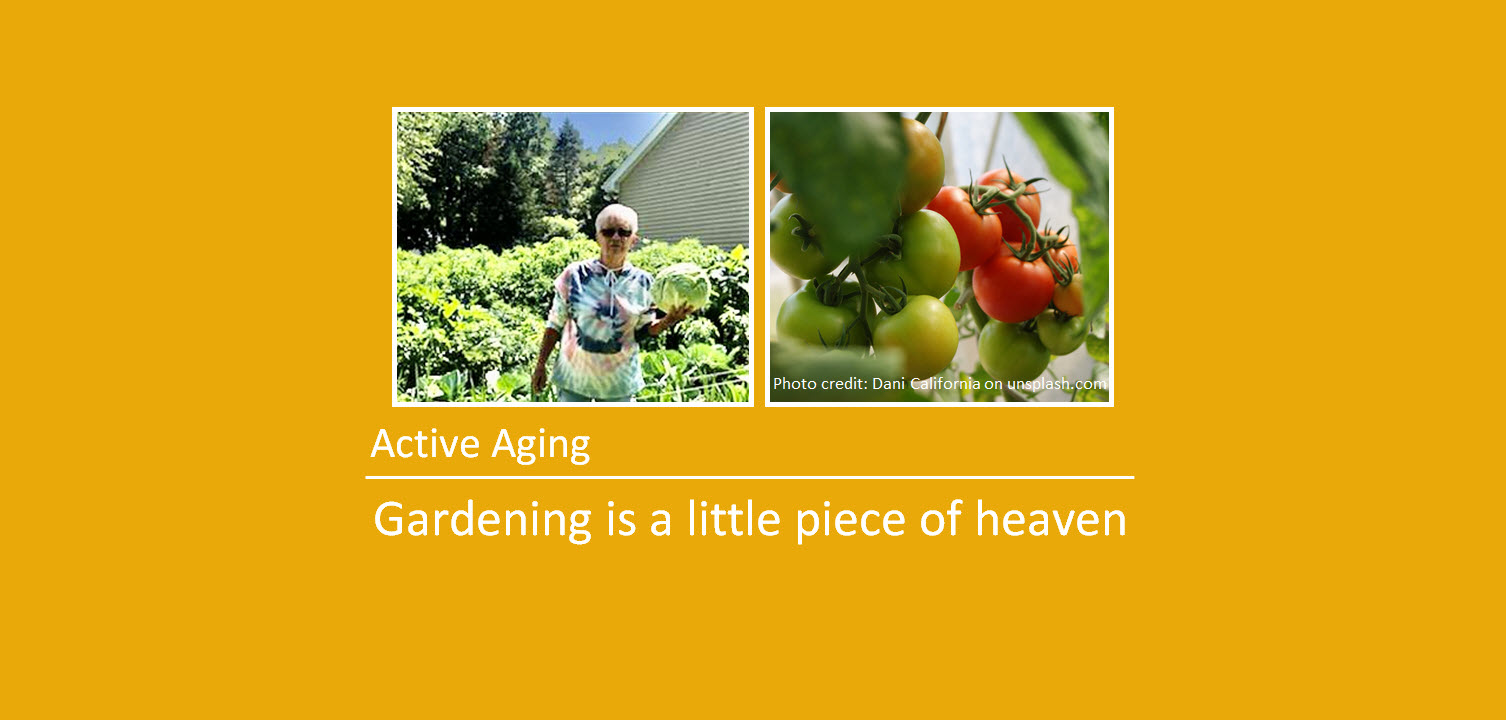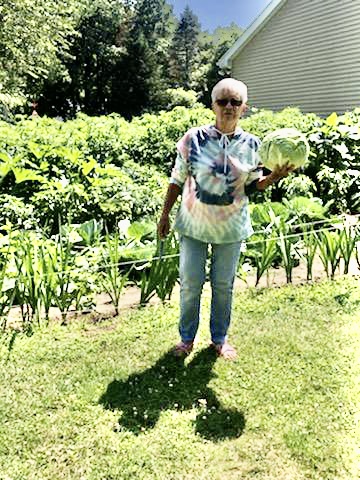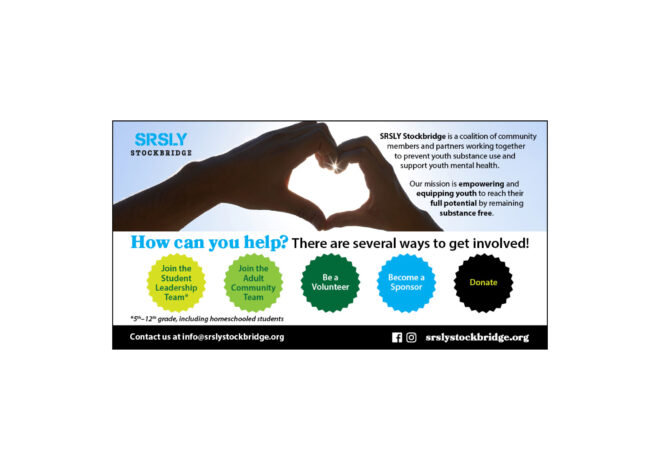
Active Aging: Gardening is a little piece of heaven
by Mary Schwark
I love to go barefoot in my garden. Maybe not when I’m hoeing rows or using tools, but definitely when I’m pulling weeds. I like to work in the garden a little every day. Getting my feet in the soil is a stress reliever, plus it’s healthy to be outside, and gardening is good exercise.
It seems I have always gardened. When I was younger, it was a chore. I didn’t enjoy it then, but now it is a pleasure.
I plant flowers around the edges of my garden, not only because it looks pretty, but because it helps to pollinate the plants. I fill big pots with potting soil and put them in the corners and sides of my garden. That’s where I plant my herbs, like basil, oregano, cilantro, chives, parsley and sage. Sage is my favorite. I like to pick a piece each day and nibble on it. Later, I dehydrate the herbs and use them through the winter.
I share my love of gardening with others who are interested in learning. Here are some tips that have worked well for me:
- Watch your garden area in the morning when the sun rises and throughout the day. Some plants will need more sun—like your tomatoes and beans. Cabbage, peppers and squash do not need as much sunlight, so you can plant them in the shadier areas.
- The way you plant for drainage depends on the plants themselves. Peppers, beans and root vegetables need more water. Don’t over-water your tomatoes; they can dry rot if you do.
- Know the soil in your garden. You can buy a test for soil at hardware stores. I use fertilizer like 19-19-19 or 12-12-12 and cow manure. Rabbit droppings are also a great fertilizer when you till them into the soil.
- Start with cold weather plants like onions and peppers. For those that you start from seeds, like beans, soak the seeds in warm water overnight. They will come up faster.
- I like to start my cabbage and Brussels sprouts from plants. When picking out plants for your garden, look at the bottom of the plants. Try to make sure no roots are showing through the bottom. Too many roots can cause them to be damaged when you plant them. They can tear and strain the plant.
- When planting your tomato plants, pinch off the small and yellowing leaves. To prevent diseases and improve your tomato harvest, plant up to the strong leaves that are coming off the plant. I put baking soda and Triple 19 around the plants, about 6 inches from each. Put water in the ground first and then place the plant in the soil. Tomato plants should be in higher ground with good drainage. Stake the plants and don’t overwater your tomatoes.
- For cucumbers, your ground should be about 70 degrees before planting. I use a meat thermometer to check. Plant them to run up; I build a wire fence line along my cucumbers for them to grow on. This makes more room in the garden.
When the crops you have planted and cared for begin growing and producing fresh vegetables, you feel like you’ve accomplished something. Gardening fills a void inside. It feels good to bring in the harvest; it’s like you’ve met a goal in life.
Feeding my family and sharing what we’ve grown makes me happy. We share with our neighbors and friends. I love taking fresh vegetables from my garden into the Senior Center, too. After I’ve canned vegetables from my garden, I enjoy sharing what I’ve canned.
Gardening is a little piece of heaven.
Mary Schwark is a member and volunteer coordinator for the Stockbridge Area Senior Center— a great place to spend time. Visit stockbridgeareaseniors.org or call 517-480-0353 for information




